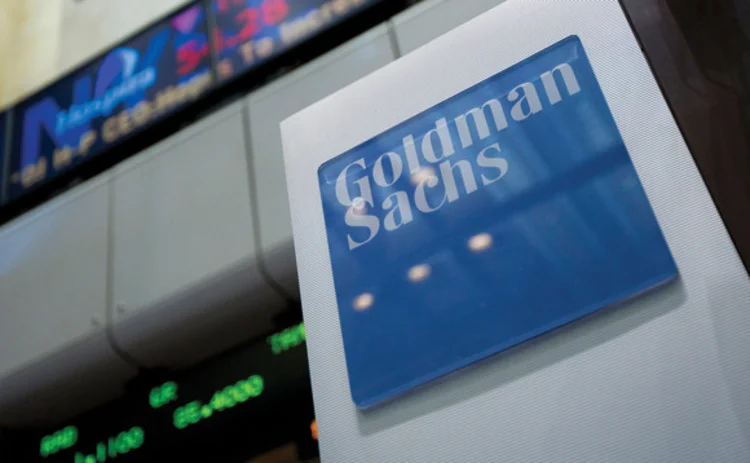
Goldman discloses ‘speed bumps’ for forex clients
Past behaviour may subject clients to a 200-millisecond hold period, as US bank tries to avoid losses

Goldman Sachs has disclosed it applies ‘speed bumps’ of up to 200 milliseconds on electronic foreign exchange spot trades, where the client trades in a manner that could expose the bank to losses.
In a disclosure that appears to have been finalised on January 18, the US bank says it applies the hold periods – based on a customer’s trading history – to guard against the risk that prices start moving against the bank. Beyond a threshold price move, Goldman could choose to reject the trade.
“These hold periods currently typically range between 0 and 100 milliseconds for a majority of counterparties, with a hold period of 200 milliseconds applying to a limited number of counterparties,” the disclosure states.
“The hold period that applies to a particular counterparty depends on which pre-defined ‘tier’ it is allocated to, with each tier representing a different hold period.”
A client’s tier is determined in part by “reviews of the counterparty’s trading history, including a review of the amount by which Goldman Sachs’ internal prices have moved for a short period of time following receipt of a counterparty’s electronic trading requests,” the document reveals.
In a footnote, it says there are some vendor price-streaming platforms that establish hold periods the bank is unable to adjust. It also notes it has an “economic events” mechanism that automatically lengthens the hold period temporarily around the release of key economic data.
The bank is not the only one to apply and vary speed bumps by client, but the disclosure is one of the most detailed, and publicly lays out the bank’s policy for the first time.
Goldman Sachs declined to comment.
The disclosures are understood to have been prompted by the release of the global foreign exchange code. A committee of central banks within the Bank for International Settlements started work on the code in 2015 in response to a series of forex scandals at large banks that included collusion to rig benchmark rates and front-running client orders. Since 2014, several large dealers have been hit with billions of dollars of fines by US, UK and Swiss authorities, with more penalties likely to come from an ongoing European Commission investigation.
It’s a kind of buyer-beware situation
A senior forex trader at one bank
The code was finalised in December, with principle 17 stating that “market participants employing last look should be transparent regarding its use and provide appropriate disclosures to clients”.
Despite that, Goldman’s disclosure is notable, says a senior forex trader at one bank, because dealers have generally kept their approach to hold times close to their chest.
“It’s a kind of buyer-beware situation. The notion is ‘You’ve seen our terms of business or our disclosures and how we operate – so, you decide whether you want to trade with us’,” he says.
Among other banks that use speed bumps, Barclays says the hold time applied to clients can vary on the basis of historical trading activity but it does not specify the length of the delay, although clients can request this information if they choose. Bank of America Merrill Lynch disclosures show it applies a speed bump of zero to 50 milliseconds, which it says can differ by customer. BNP Paribas says the “expected or typical period of time for making the deal acceptance decision is between 10 milliseconds and 150 milliseconds”.
The speed bumps generally differ from the so-called last-look window, which is a period in which a liquidity provider checks counterparty credit limits and whether the final price is still valid. The speed bumps are applied in addition to this window, extending it for certain clients depending on their trading behaviour. Some banks, though, describe the client-varying price check as part of last look.
Proponents of speed bumps say they protect the bank from ‘toxic’ customer flow. This can take various forms. For instance, a client may have faster connections than the liquidity provider and trade ahead of a price change; others may break trades up and execute them with multiple liquidity providers simultaneously, leaving those dealers trying to hedge the same position; or they may simply request quotes from a large number of liquidity providers simultaneously, which raises the risk of information leaking into the market.
Rejection
The extra hold period is generally applied to monitor whether a client’s trading activity moves the price beyond the given threshold. Goldman Sachs’ disclosure says that if the price moves in the client’s favour beyond a threshold it will be rejected. If it moves in the bank’s favour beyond a threshold it may be subject to a “price improvement” where the executing price is improved by the difference between the tolerance band and the final price, up to a maximum of 3 basis points.
According to their public disclosures, bank practices on this point vary. Some take a strictly symmetrical approach, rejecting all trades where prices move outside a tolerance band during the last-look or hold period – for or against the client. Deutsche Bank’s default setting is to reject trades if they move against the bank during the window – an asymmetric approach that the bank argues allows it to provide better prices – but clients can opt for rigid symmetry in price checks and trade acceptance.
Given forex spot prices change at five-millisecond intervals, liquidity providers such as XTX Markets claim extended hold times are bad for end-users as it allows the dealer to see multiple price updates before deciding whether to accept or reject a trade. A 100-millisecond hold period would give a liquidity provider the opportunity to see 20 price updates before making a decision on whether to accept a trade, for instance. In theory, this could make rejections more likely; in the past it also enabled practices the industry has since agreed to limit, such as hedging the trade prior to execution, or adjusting the bank’s live quotes, both of which could move the market against the client.
A number of dealers now apply a so-called zero hold time, which means they conduct price and credit checks in less than the five milliseconds it takes for market prices to refresh.
January 29, 2018: This article was updated to clarify that Barclays clients can request the length of the hold time applied to their trades.
Only users who have a paid subscription or are part of a corporate subscription are able to print or copy content.
To access these options, along with all other subscription benefits, please contact info@risk.net or view our subscription options here: http://subscriptions.risk.net/subscribe
You are currently unable to print this content. Please contact info@risk.net to find out more.
You are currently unable to copy this content. Please contact info@risk.net to find out more.
Copyright Infopro Digital Limited. All rights reserved.
You may share this content using our article tools. Printing this content is for the sole use of the Authorised User (named subscriber), as outlined in our terms and conditions - https://www.infopro-insight.com/terms-conditions/insight-subscriptions/
If you would like to purchase additional rights please email info@risk.net
Copyright Infopro Digital Limited. All rights reserved.
You may share this content using our article tools. Copying this content is for the sole use of the Authorised User (named subscriber), as outlined in our terms and conditions - https://www.infopro-insight.com/terms-conditions/insight-subscriptions/
If you would like to purchase additional rights please email info@risk.net
More on Markets
Natixis turns on the taps in flow trading
French bank boosts flow business, balancing structured solutions capabilities
Rethinking P&L attribution for options
A buy-side perspective on how to decompose the P&L of index options is presented
Buy side would welcome more guidance on managing margin calls
FSB report calls for regulators to review existing standards for non-bank liquidity management
Citi halves swaptions book with US retail funds
Counterparty Radar: Mutual funds and ETFs cut exposures by 22% in Q4
Who’s winning the €STR futures race? Depends how you measure
CME, Eurex and Ice all claim to be leading, but experts say it’s too early to pick a winner
CDS review seeks to tackle conflicts ‘elephant’
Isda AGM: Linklaters proposes overhaul for determinations committee - including independent members
Saudi Arabia poised to become clean netting jurisdiction
Isda AGM: Netting regulation awaiting final approvals from regulators
Buy side looks to fill talent gap in yen rates trading
Isda AGM: Japan rate rises spark demand for traders; dealers say inexperience could trigger volatility








